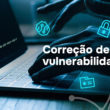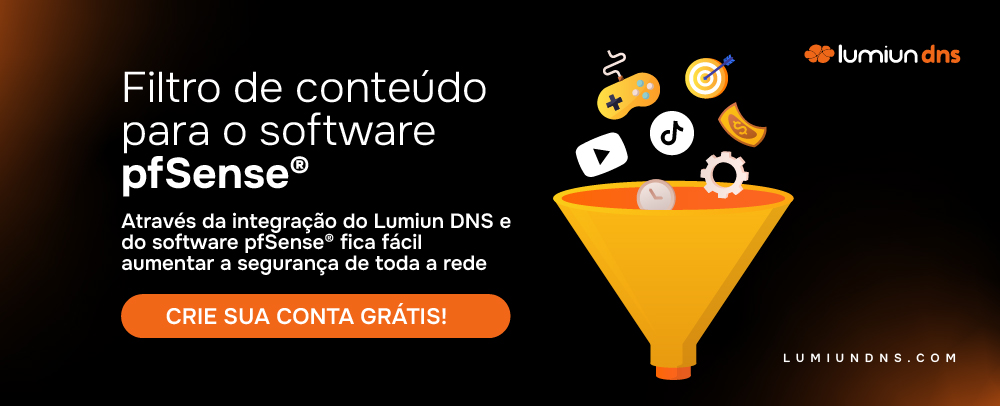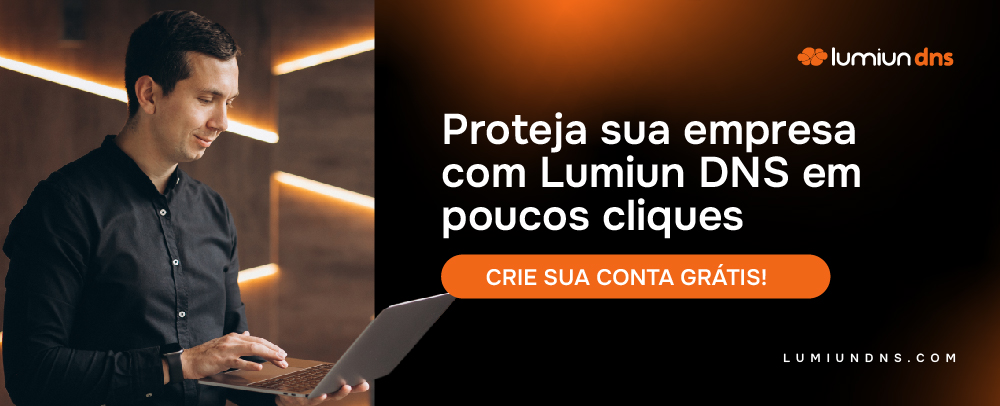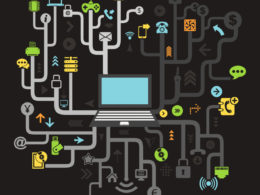With the expansion of the digital world, information security becomes crucial to protect sensitive data and systems. In 2024, new trends and technologies in data security emerge to combat increasingly sophisticated cyber threats.
The need to combat this problem has led companies to adopt new tools and strategies to anticipate, detect and mitigate risks. To keep you informed and bring you the most important information for data protection in a digital environment, we have prepared this article on the main trends and emerging technologies in data security.
The importance of data security in 2024
Just as cybercriminals develop new strategies (such as malware , phishing attempts, spyware, among others) to bypass data security resources, steal data and improperly access private systems, more intelligent tools are also developed to increase layers of defense . For this reason, tools aimed at data protection are increasingly modern and are able to combat these threats more assertively.
The great impact that these criminal approaches have been having on companies in all segments has made data security a priority among companies . According to data from IBM , cyberattacks cost approximately $4.45 million in 2023, a 15% increase over the last three years. What was a priority only for security companies is now crucial for businesses in all segments.
Growth and impact of cyber threats on SMEs
Contrary to what many think, concerns about data security should also be a focus for small and medium-sized companies . This is because, currently, these businesses are frequent targets of cyber attacks.
This risk is magnified by the perception that smaller companies generally have weaker security defenses . Following an exponential growth in recent years, in 2024 the advancement of cyber threats will continue to negatively impact these organizations. According to research conducted by Cobalt: Offensive Security Service , the estimated global cost of cyberattacks to businesses is expected to reach approximately $9.5 trillion.
An example of this is the growth of ransomware, phishing and malware attacks. According to data from cryptocurrency company Chainalysis , hacker groups earned revenue of US$1.1 billion from ransomware attacks in 2023.
In 2023, Kaspersky recorded a 617% growth in blocking phishing attacks last year, with an average of 544 attacks per minute. This scenario is even more worrying in Brazil, where these attacks increased more than five times during the same period.
Regarding the year 2024, a Trend Micro report reveals that in the first four months, 46 billion cyber threats were blocked, a number that corresponds to 28.5% of the total recorded last year. 2023 brought worrying numbers for the sector, as it reached 161 billion attacks.
These approaches have become increasingly common, exploiting vulnerabilities and causing very significant disruptions to these businesses. In addition to the financial impacts, small and medium-sized companies face damage to their reputation and credibility.
Top Data Security Trends for 2024
This increase in the number of approaches carried out by cybercriminals has led to the development of numerous technologies that help companies stay protected and avoid the damage that can be caused by these actions. This means that companies need to adopt solutions that are appropriate to their activity and that help keep their data increasingly protected from the actions of these criminals.
In this sense, technologies have been developed to help companies protect themselves from the latest data security threats in 2024, we can mention:
Quantum computing and post-quantum cryptography
Quantum computing is a multidisciplinary field that encompasses computer science, physics and mathematics. This field includes hardware research and application development. Unlike classical computers, quantum computers use quantum bits, which represent zero and one simultaneously thanks to quantum superposition.
In addition to offering greater processing capacity, quantum computing solutions feature specific algorithms to carry out their calculations. This tool can be implemented in cryptography, simulation of chemical and physical systems, in addition to Artificial Intelligence and Machine Learning.
Definition and impact on current cryptography
Quantum computing is a true revolution in information processing, capable of solving complex problems exponentially faster than conventional computers. This technology has very significant implications for data security, especially in the area of encryption.
Traditional cryptography, based on complex mathematical problems, could become vulnerable with the advancement of quantum computers. Responding to this imminent threat, post-quantum cryptography was developed to resist attacks from quantum computers, using algorithms that remain secure even in the face of immense quantum processing power.
Preparing companies for quantum computing
Taking into account the immense risk that quantum computing can present to business and information security, it is essential to establish strategic planning and a proactive approach. In this sense, organizations need to evaluate their encryption infrastructures and identify possible vulnerabilities to quantum attacks.
It is essential to perform security audits, implement post-quantum cryptography, and collaborate with experts to develop more robust solutions. For all of this to be possible, companies need to invest in research and development, keeping up with advances in quantum computing and cryptography.
A continuous education process helps keep up with advances in computing and prepares professionals to face the challenges and opportunities of new technology.
Artificial Intelligence and Machine Learning in security
Artificial intelligence and machine learning are areas of Computer Science that have significantly transformed several sectors. While artificial intelligence refers to the ability of computer systems to perform tasks that normally require human intelligence, machine learning is a subcategory focused on the development of algorithms and techniques that allow computers to learn from data.
Applications of AI in threat detection
Artificial intelligence and machine learning are resources that are transforming cybersecurity , the integration of these technologies is essential to improve detection and response mechanisms. AI in cybersecurity's ability to detect threats and respond to incidents in real time is one of its biggest advantages. Machine learning algorithms analyze patterns in large volumes of data, identifying suspicious activity that could signal a security breach.
In terms of information security, companies can implement artificial intelligence to analyze logs and security events. Systems based on artificial intelligence can process thousands of records in just a few seconds, identifying anomalies and alerting security teams about suspicious activities.
Benefits and challenges of AI in cybersecurity
Thanks to its resources and wide range of opportunities, artificial intelligence is very beneficial for cybersecurity. In addition to real-time threat detection capabilities, this tool can also automate repetitive tasks and allow professionals to focus on higher-value activities.
However, implementing AI in cybersecurity also presents its challenges. This is because the accuracy of the systems depends specifically on the quality of the information used in their training, so incomplete or incorrect data can lead to false positives or negatives, impacting their effectiveness.
Zero Trust Architecture (ZTA)
Zero Trust Architecture is the cybersecurity model designed to deal with current, dynamic and sophisticated threats. Unlike traditional security models that assume that everything is trustworthy, ZTA assumes that there should be no automatic trust in anything.
Zero Trust Basics
Architecture (ZTA) is a security strategy based on the idea that no entity, internal or external, should be trusted by default. This way, rather than assuming that device users are secure , ZTA requires continuous verification of identity and context to allow access to resources.
The basic principles of zero trust include:
- Network segmentation: dividing the network into smaller zones to limit access to specific resources based on need;
- Strict identity-based access control: ensuring that only authorized users have access to critical system data;
- Complete visibility of network activities: detection of suspicious activities in real time, ensuring complete visibility of operations.
Implementation of ZTA in companies
The implementation of ZTA in a company depends on a cultural and technological change in the organization. This means that it is necessary to evaluate the IT infrastructure and identify areas where ZTA can be effectively applied, in addition to adopting network segmentation technology, implementing identity-based access control solutions and continuous monitoring tools.
It is essential that there is a collaboration process between the different departments so that policies and procedures are developed that support this implementation. Ongoing employee training is also essential to ensure everyone understands Zero Trust principles and follows security best practices.
Data security in a remote work environment
Remote work allows employees to carry out their tasks from their own homes, carrying out activities that were previously carried out in the business environment. This viable alternative for certain workers has also helped companies reduce space and labor costs.
Remote work security challenge
After the pandemic that we experienced a few years ago, remote work became a reality within many companies. While beneficial in many cases, this approach has also brought with it a number of data security challenges.
The dispersion of employees during their activities and the use of personal networks and devices ends up increasing the attack surface, making the work of security teams even more challenging. This means that companies need to invest in resources to protect data in transit and at rest , maintain the security of devices against malware and also adopt a security policy for the company.
To combat these challenges, companies must adopt strategies that include controlling networks and devices, as well as implementing more effective security measures , taking a comprehensive approach to include clear policies, ongoing training and appropriate technologies.
Best practices for protecting data outside of the office
To be able to protect information outside the office, companies need to implement a combination of appropriate security policies, training and technologies. Security policies need to include clear guidelines on the use of personal devices, protecting information, and responding to security incidents.
As a standard protection measure, companies must ensure that devices used by employees are protected with antivirus, firewall and especially data encryption. In this sense, the use of Virtual Private Networks (VPN) is fundamental in protecting data in transit, ensuring that communication between devices is more secure through encryption.
Data protection in a Multicloud environment
A Multicloud environment refers to an organization that uses more than one cloud service . This way, it can meet its computing needs, such as application service and data storage.
Understand the differences between the types of cloud that are currently used:

Risk management in a Multicloud environment
The Multicloud environment, a space where companies use several cloud service providers, offers a lot of scalability and flexibility. However, these environments also present unique challenges that can impact an organization's cybersecurity.
Managing risks in a Multicloud environment requires identifying and mitigating information security threats, including continually evaluating cloud providers' security policies.
Risk management in this environment includes adopting a holistic approach, covering all platforms that are used. Implementing unified security solutions and performing audits ensures cloud data is protected and compliance with company security policies.
Strategies for protecting data across multiple clouds
Managing information across multiple clouds requires implementing a combination of security practices and modern technologies. To achieve this, companies need to adopt encryption solutions to protect data in transit and at rest, so that only authorized users can access this information.
Furthermore, it is also necessary to implement security policies across all clouds, so that all protection measures are applied regardless of the provider. These activities require continuous monitoring to detect anomalies and quickly respond to security incidents.
Innovative cybersecurity technologies
Due to cybercriminals' modern strategies for improperly accessing data, new technologies have emerged that would help combat these more sophisticated threats. These new tools will help companies stay protected and avoid indiscriminate access to confidential or sensitive information , maintaining their reputation and avoiding sanctions imposed by current legislation.
Blockchain for data security
Blockchain is a distributed ledger technology that makes it possible to create a record of digital transactions more securely and in a transparent and decentralized way . In simple terms, it is a type of database that stores records (or blocks) of information in a linear and sequential manner, grouped into blocks that are interconnected and protected by encryption.
Blockchain applications in data protection
Blockchain is a tool known for its application in cryptocurrencies , but it also offers significant potential for information security . This technology uses a decentralized and immutable record to store data, ensuring that information cannot be changed or manipulated without due detection.
These characteristics make blockchain a very powerful tool for protecting sensitive data, and can be applied to identity verification in data security processes as companies can create more secure, immutable and verifiable digital identities, reducing the risk of identity theft and fraud. . Furthermore, it can also be used to protect financial transactions, medical records and other sensitive information.
Advantages and limitations of using blockchain
Although this feature can add more security and efficiency to a company's security strategy, blockchain also has its limitations. A significant challenge with this feature is scalability, as recording all transactions on a decentralized network can be quite slow and resource-consuming. Implementing blockchain-based solutions can be complex and expensive, requiring careful evaluation before an enterprise adopts it as a security solution.
Security automation and orchestration
Security orchestration is a practice of integrating and automating cybersecurity processes with the help of a centralized platform. During this process, companies coordinate several systems to protect information , such as intrusion detection and prevention, firewalls and vulnerability management.
Benefits of automation in incident response
Security automation and orchestration has been transforming the way organizations respond to cyber incidents. With the help of automated tools, companies can detect and respond to threats in real time, considerably reducing response time and minimizing the impact of cyber attacks.
Automating helps quickly identify and mitigate threats, easing the burden on security professionals and increasing the accuracy of incident responses.
Popular security orchestration tools
Currently, there are several orchestration tools (a resource that allows the integration of different applications and systems in a physical environment or in the cloud) and security tools available on the market, each offering unique benefits and functionalities to improve incident response. Some of the most used tools include:
These platforms allow the integration of various security solutions, providing the company with a more unified and coordinated view of its protection activities. Some security orchestration tools also offer advanced functionality such as correlating security events, automating repetitive tasks, and generating detailed reports.
Advances in Multi-Factor Authentication (MFA)
Multi-factor authentication (MFA) is a security strategy that adds an extra layer of protection to the identity verification process. Multi-factor authentication requires the user to use multiple forms of verification in addition to the basic password.
Evolution of MFA technologies
Multi-factor authentication is crucial to security, requiring users to provide more than one form of verification to access information. Multi-factor authentication technologies have evolved significantly, allowing for the incorporation of more advanced and secure methods to increase security. This means that in addition to traditional passwords, multi-factor authentications also use biometrics, device-based authentication, and physical tokens.
Technologies for multi-factor authentication also include the use of behavior-based authentication for anomaly detection and user authentication. In this way, the approach improves the company's security by making it difficult to falsify credentials.
MFA implementation and effectiveness
To implement multifactor authentication in your company, it is essential to choose authentication methods that balance security and convenience for users . In this sense, companies need to consider the types of information they will protect, compliance requirements and user preferences.
When implemented well, multi-factor authentication helps reduce the risk of unauthorized access and can prevent most credential-based attacks, such as password theft and phishing . However, it is important for the organization to remain vigilant and continually update solutions to block new threats and challenges.
Strategies for implementing new technologies
To be able to add all the benefits that these resources can offer, it is necessary for the company to implement these new technologies in the best way possible. It is important to select tools that meet the company's daily needs, improving protection without impacting employees' routines.
As we well know, new technologies can be differentiators in your organization's protection strategy. For this reason, we have prepared some tips so that you can implement this correctly and increase the digital security of your business.
Security assessment and planning
Security planning is a fundamental step in your implementation strategy. At this point, the company will decide which resources will be adopted and how these tools will be used on a daily basis.
Carrying out risk assessments
Implementing new technologies begins with a comprehensive assessment of your company's risks and vulnerabilities. In addition to identifying possible points for improvement, this assessment will identify potential threats and the impact of security incidents on the organization . Based on this data, companies can prioritize their security initiatives and allocate resources to real problems.
Companies must perform risk assessments regularly and continually review them to keep up with changes in the IT environment and adapt to current threats. To be complete, consistent and regular, these assessments can be carried out using recognized frameworks, such as ISO and NIST . These models serve as a database, bringing together the best practices to be implemented to ensure efficiency and security.
Development of personalized security plans
The risk assessment will provide fundamental information for the development of personalized security plans, focused on meeting the specific needs of your company. These plans need to include detailed policies and procedures for data protection and incident response to ensure business continuity.
These security plans also need to be dynamic, so they can adjust as needed. Integrating security plans with other business strategies is essential for a comprehensive and coordinated approach across the organization.
Sensitive Data Protection Policy was recently developed by Lumiun , functioning as a set of guidelines, methodologies and procedures to guarantee the security and privacy of personal data that are considered sensitive. With the help of this new policy, companies can protect this highly confidential data more assertively. the complete material on the subject here
Employee training and awareness
Raising awareness among your employees is a fundamental step for your company's culture to focus on cybersecurity and information protection. Continuous training is essential to prepare employees to use security tools and deal with cyber incidents.
Cybersecurity Training Programs
Information security involves all employees, not just the IT team. A cybersecurity training program is essential to raise awareness of best practices, company policies, and safe use of digital resources.
These training programs must be continuous and adaptable, taking into account current risks and the company's reality , always remaining prepared to deal with security problems. To make this process even more intelligent, it is possible to establish interactive training sessions, practical exercises and attack simulations. Creating a cybersecurity culture, where data security is a priority, can also bring significant improvements to the organization's security posture.
Continuous awareness of new threats
Continuous awareness is critical for employees to stay informed and engaged. This can be achieved through a process of regular communication such as workshops , newsletters or awareness campaigns. All of this will promote a security culture where employees feel responsible for protecting information and also adopt security initiatives on their own.
Using stronger passwords, enabling multi-factor authentication and raising awareness about the dangers of sharing sensitive data makes all the difference in changing your organization's culture. Creating an environment focused on cybersecurity will allow employees to feel comfortable reporting incidents, being a fundamental process to contribute to a stronger security posture.
Continuous monitoring and updating
Data security is an ongoing process that requires constant monitoring and updating within the company. This way, organizations will be able to implement smarter strategies and ensure that vulnerabilities are addressed before real problems are caused. In this sense, we also refer to updating security policies, as a way of keeping employees aware of new threats and strategies aimed at protecting information.
Furthermore, considering that companies continually strengthen their security tools with updates based on the most modern and dangerous cyber risks, keeping these tools updated becomes more than a necessity, becoming indispensable to your organization's security strategy.
Security Monitoring Tools
Security monitoring tools such as Lumiun Box , Lumiun DNS , and IBM QRadar are deployed to provide complete visibility into activities and enable real-time incident detection and response. The security information and event management system, network monitoring solutions and EndPoint detection and response tools are valuable allies in this process.
The company uses these resources to observe, analyze and manage the functionality and security of the tools used. They also help identify problems, optimize processes and ensure that digital resources are working as expected and always in accordance with established security policies.
Importance of regular security updates
Updates are specifically developed to address new threats and vulnerabilities. For this reason, these updates often include applying security patches, updating malware signatures, and reviewing security policies. These updates may also include performance and stability improvements to the tools, improving functionality and usability.
Additionally, these updates often integrate new incident detection and response technologies, include more customized adjustments to security settings to reflect best practices, and fix bugs that can create points of vulnerability that are exploited by criminals.
Adopting a proactive approach and maintaining a dynamic security posture are fundamental steps to protecting your data and systems, and updating tools is essential in this process.
Failure to update can create very dangerous vulnerabilities for your company's protection strategy. Through them, criminals are able to view confidential information, collect sensitive data and carry out scams of different types , causing serious losses.
Insights to increase data security for enterprises in 2024
Today, to increase data security it is essential to adopt a multifaceted approach, including several areas of vulnerability. In addition to using more modern and efficient tools, it is also the company's role to adopt more comprehensive and transparent policies so that employees can understand the importance of transforming cybersecurity and making it a priority within the organization.
In this sense, data security in 2024 requires a holistic approach that combines advanced technology, organizational culture and regulatory compliance. These strategies can help companies protect this information more effectively against constantly evolving cyber threats.
Strategies to protect data and mitigate risks
Given the increasing sophistication of cyber threats, data protection and risk mitigation must be a priority. The most effective data protection strategies begin with identifying and evaluating sensitive data to be able to adopt more specific resources.
In this sense, it is also necessary to implement multi-layered security measures, such as data encryption to protect sensitive information against access by attackers . Identity and access management solutions also help monitor and control who has access to information, minimizing the risk of unauthorized access.
Quantum computing, in turn, offers greater processing capacity and includes specific algorithms for cryptography, chemical and physical simulations, as well as applications in Artificial Intelligence and Machine Learning.
In this sense, the integration of artificial intelligence and machine learning is revolutionizing cybersecurity by improving detection and response mechanisms. AI presents an unparalleled ability to detect and respond to threats in real time , with ML algorithms analyzing patterns in large volumes of data to identify suspicious activity and potential security breaches.
Furthermore, in information security, AI is crucial in analyzing logs and events, quickly processing thousands of records to detect anomalies and alert security teams.
In the case of Zero Trust, its correct implementation with the help of network segmentation resources, identity-based access control and continuous monitoring, it is possible to adopt a more preventive stance regarding threat mitigation . To achieve this, cross-departmental collaboration is crucial to developing supporting policies and procedures, while ongoing employee training ensures understanding of Zero Trust principles and adoption of security best practices.
Importance of constant adaptation and evolution
We need to have as our main idea that data security is a very dynamic field, always requiring constant adaptation and evolution. Only in this way will your company be able to keep up with cyber threats that can harm your business and cause an extremely harmful impact.
Your company's adaptation process begins with continuous monitoring of the threat landscape, so that everything stays up to date on the latest cyber attack trends and techniques. In this process, it is also possible to learn about new protection tools and technologies that can be used, strengthening your company's protection strategy brings numerous benefits to the organization.
For your company to constantly evolve in its security practices, it is essential to invest in new technologies and approaches. Emerging technologies , such as machine learning and artificial intelligence, can offer advanced incident detection and response capabilities, such as a more autonomous and efficient detection process.
Data security is a responsibility shared by everyone in the organization, so investment in continuous training and awareness is essential. The company needs to carry out regular assessments and updates of the security solutions adopted. Keeping your security resources always prepared to deal with incidents is essential, avoiding the various losses that these approaches can cause.











